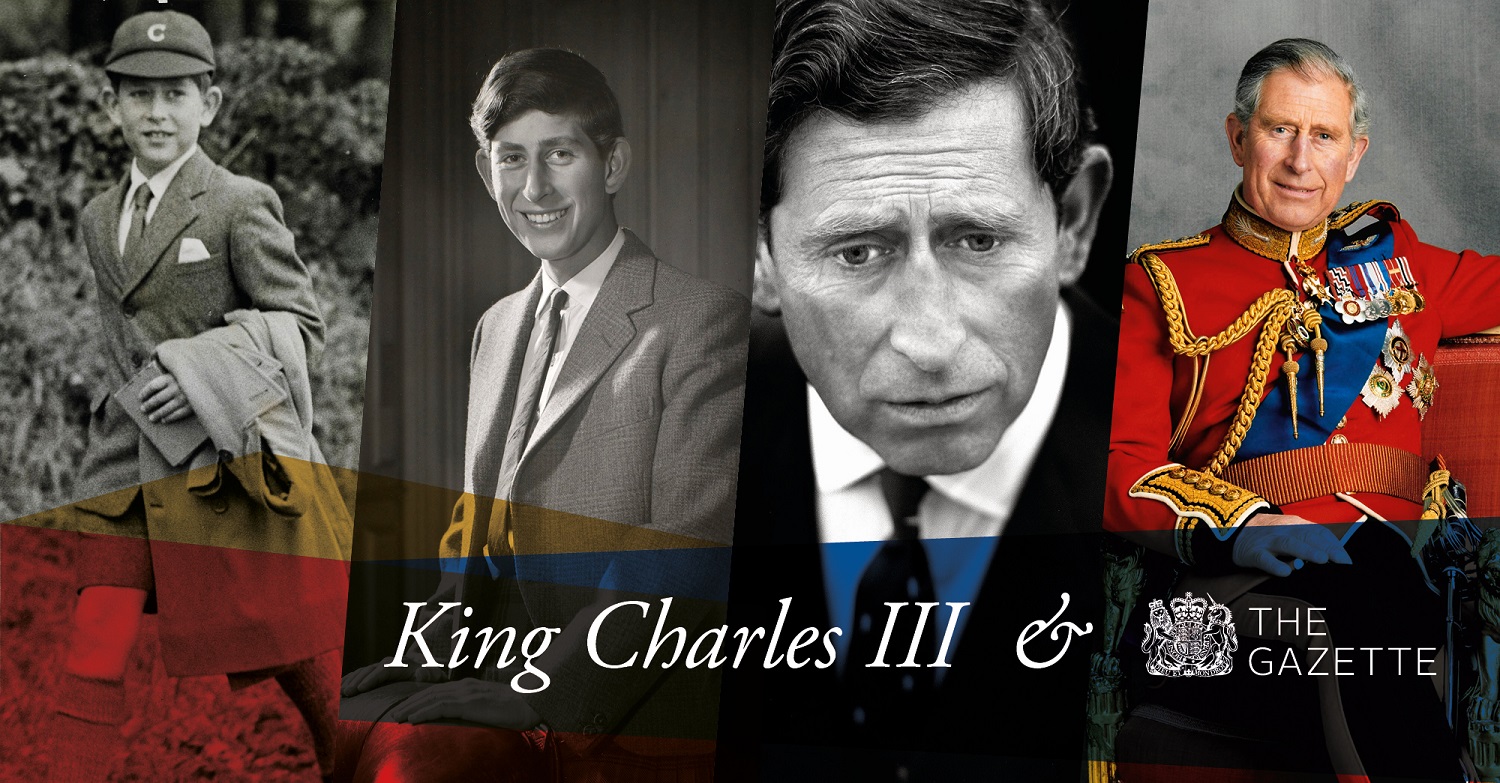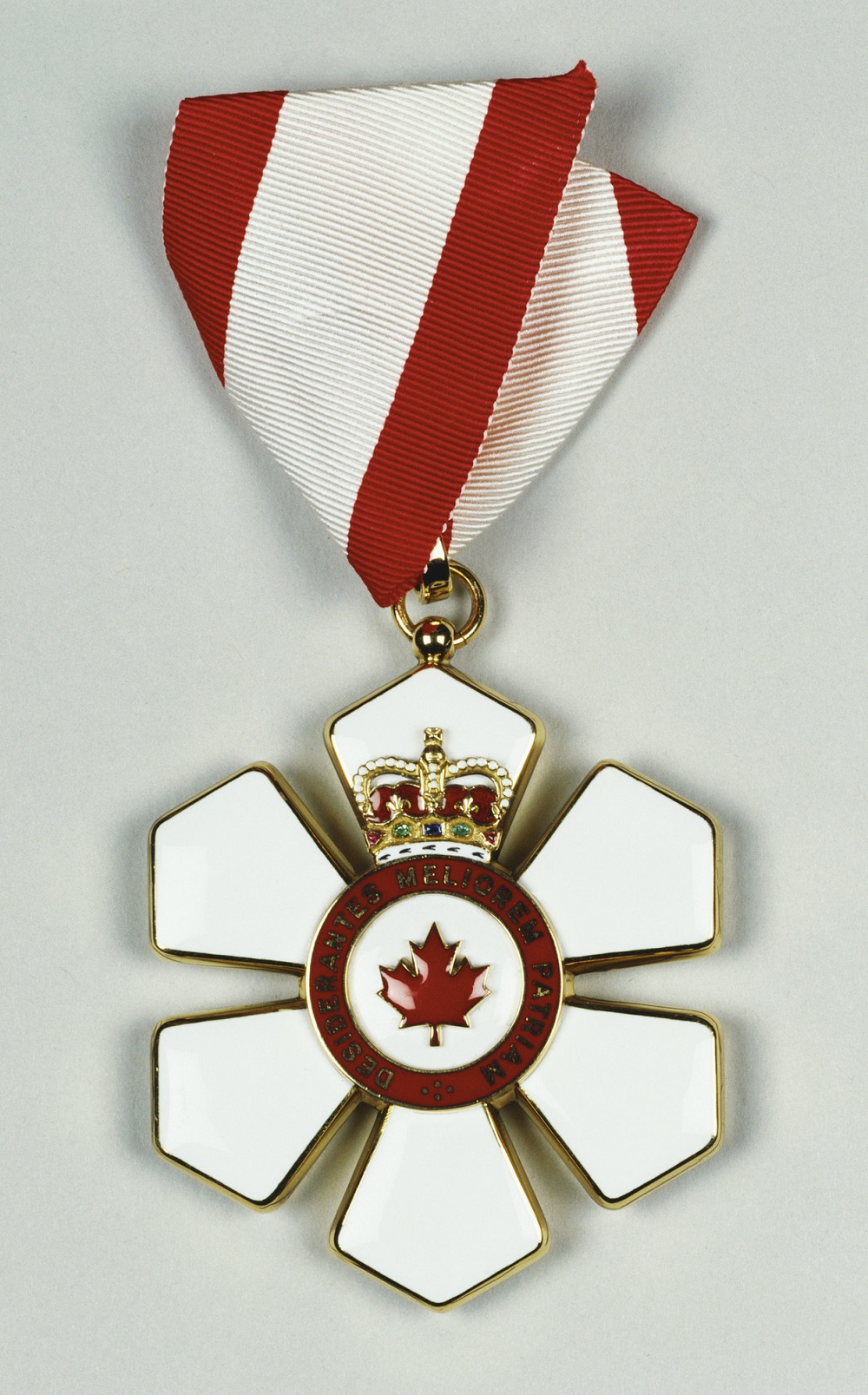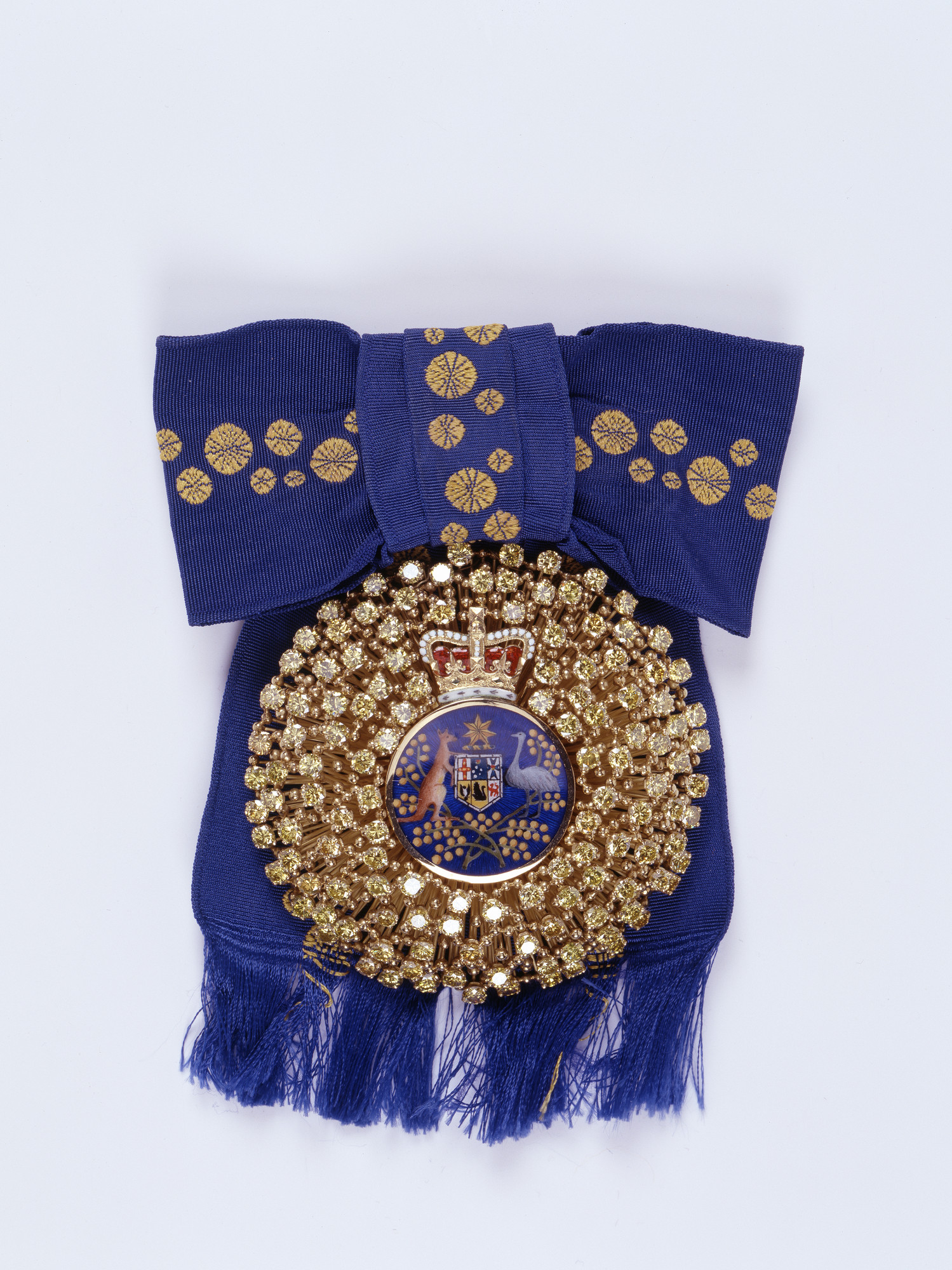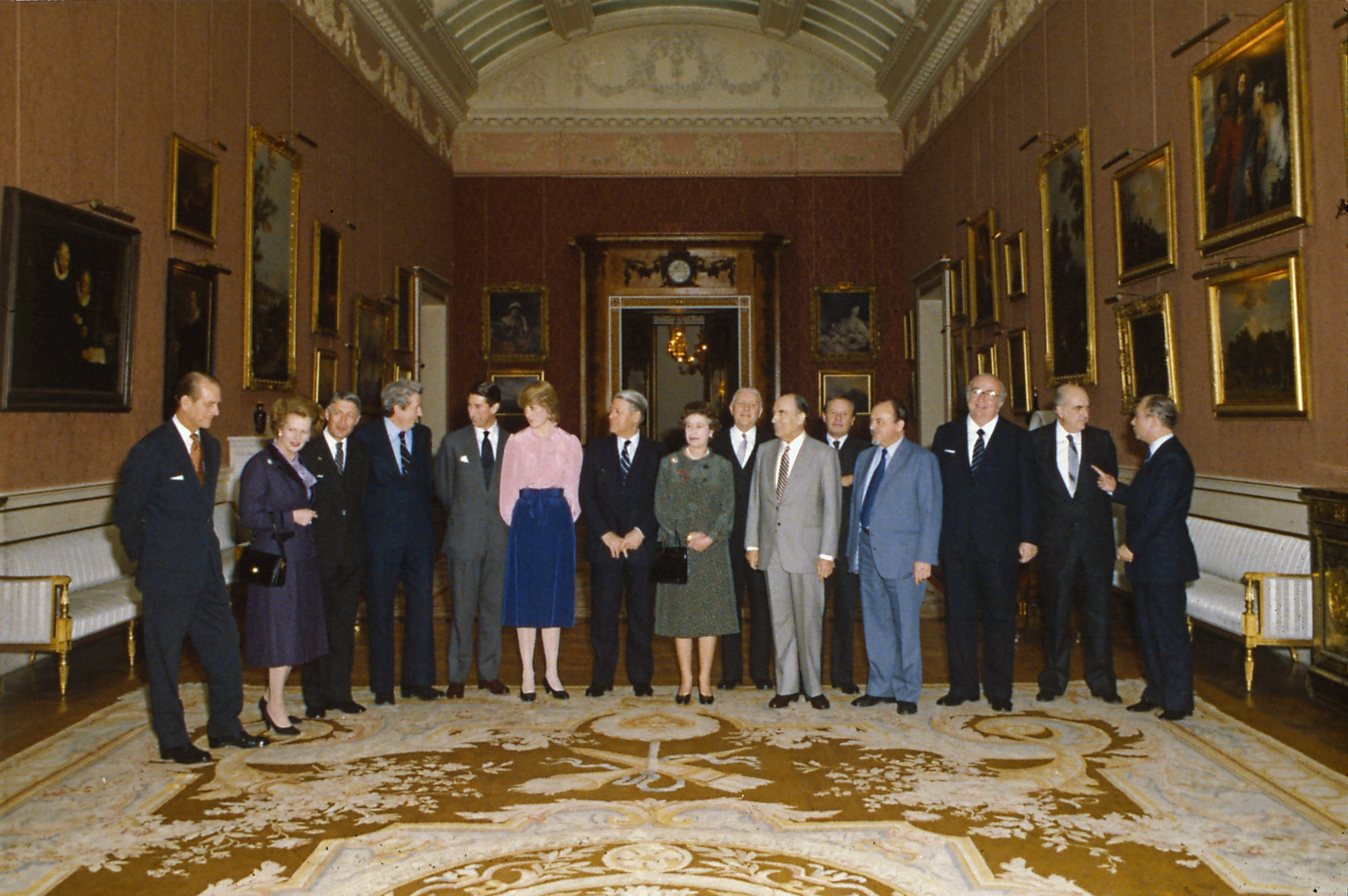King Charles III and The Gazette: Commonwealth awards

Ahead of the coronation due to take place on Saturday 6 May 2023, historian Russell Malloch examines aspects of the new King’s life that have left a record in The Gazette. In this chapter, we look at the Commonwealth and foreign honours of Charles III.
Chapters

Commonwealth awards
In addition to Prince Charles’s membership of several of the British orders, all of which – apart from his knighthood of the Garter – were announced in The Gazette, he was also a member of two of the principal Commonwealth orders, and the recipient of several Commonwealth medals.
The London Gazette did not normally notify the initial grant of non-British orders, decorations or medals, which were instead announced in the official gazettes of the relevant realm, such as those that were published in Australia, Canada and New Zealand.
The most obvious exception to the policy of not reporting Commonwealth awards related to the Queen’s Service Order and its medal. These honours were created in 1975 and conferred on the advice of the Queen’s New Zealand ministers, and awards were reported in The Gazette until the New Zealand Royal Honours System was established in 1996.
The distribution of Commonwealth honours, including the orders in respect of which Queen Elizabeth was the sovereign, was a matter of limited relevance to readers of The Gazette before 1967. In that year the Canadian government took an important step in establishing an indigenous national honours system, with the creation of the Order of Canada. The Canadian example was followed in 1975, when the Order of Australia and the Queen’s Service Order were instituted on the advice of the Queen’s ministers in Canberra and Wellington.
A limited royal presence evolved in some of the Commonwealth orders. The appointments were not gazetted in the United Kingdom, but some of the related post-nominal letters began to appear in The Gazette. This was demonstrated by the notice for the award of a long service medal to Prince Charles in 2018, when his titles were shown as including AK for knight of the Order of Australia, and QSO for companion of the Queen’s Service Order (Gazette issue 62445).
The prince’s exposure to the Commonwealth orders began in March 1981 when the Australian prime minister, Malcolm Fraser, announced that the prince had been made a knight of the Order of Australia and would be invested by the governor-general Sir Zelman Cowen. The insignia consisted of a badge representing a golden wattle flower that was worn at the neck, together with a circular breast star bearing the Australian coat of arms.
 The Australian order began with three grades, with the level of knight/dame being
added by the Fraser administration in May 1976. Holders of the AK enjoyed a high place
in Australian society, as knights were given precedence before the grand crosses of
the Order of St Michael and St George (GCMG).
The Australian order began with three grades, with the level of knight/dame being
added by the Fraser administration in May 1976. Holders of the AK enjoyed a high place
in Australian society, as knights were given precedence before the grand crosses of
the Order of St Michael and St George (GCMG).
Prince Charles then joined the Queen’s Service Order in April 1983 at the start of a visit to New Zealand, during which he was accompanied by his 9-month-old son William, later Prince of Wales. His companion’s badge included the Queen’s portrait by the artist Cecil Thomas (who designed the image for her 1953 coronation medal) and was suspended from a riband based on a Maori pattern with diagonal steps of red ochre, white and black.
In contrast to the high status that Australia gave its knights, the New Zealand table of precedence allocated the companions of the Queen’s Service Order to a place just above the low-ranking officers of the Order of the British Empire.
The Duke of Edinburgh had also joined the New Zealand order by the time his son was invested, and both wore the distinctive badge at the head of their medal bar for the first time at a sovereign’s birthday parade in London in June 1983.
Precedence
The royal family’s practice of setting the QSO before their British medals lasted well beyond an initial enthusiasm for the New Zealand insignia, and neither Prince Charles nor his father placed any other Commonwealth badges on their medal bar.
This approach of giving precedence to the QSO was also unorthodox, as the royal prerogative was used to dispense with the rules the Central Chancery of the Orders of Knighthood established in October 1983, which determined that the insignia of honorary members of the Commonwealth orders that were instituted by the Queen should be worn after, rather than before, all of the efficiency and long service decorations and medals (Gazette issue 49522). The Central Chancery statement explained that:
“The general rule is that non-British insignia should be worn after all British orders, decorations and medals and in the order of the dates on which they were conferred. When, however, insignia are being worn on occasions specifically connected with the donor country, pride of place should be given to the insignia of that country.”
A similar approach was adopted in 2019, when the Central Chancery advised that “Commonwealth Realm’s orders decorations and medals” should be worn after the efficiency and long service awards “In date of award (if authorised to be accepted and worn)” (Gazette issue 62529).
The 2019 notice also explained that: “Commonwealth and foreign orders, decorations and medals awarded to UK citizens are consider(ed) honorary in the United Kingdom. These awards may only be worn when the Sovereign’s permission has been given. No titles associated with any Commonwealth or foreign order may be used in the United Kingdom. The sovereign may give permission for post nominals to be used if appropriate.”
Regardless of what the Central Chancery said, the QSO held a favoured place in royal circles from the 1980s and retained a prominent role during the ceremonies connected with the death of Queen Elizabeth in September 2022, when King Charles wore the New Zealand badge at the head of his medal bar, as did the Princess Royal, who had joined the order in 1990.
The royal prerogative was used to set aside the Central Chancery’s regulations and other statutes and customs in their application to members of the royal family. Princess Margaret, for example, was permitted to wear the male style of the Victorian Chain, while the Princess Royal used the letters KG and KT rather than the statutory LG and LT to denote her membership of the Garter and the Thistle, as in The Gazette’s notice about the award of her naval long service medal in 2018 (Gazette issue 62445).

Foreign awards
As with most of the Commonwealth honours, The Gazette did not report the initial award of any of the foreign honours that were conferred on members of the royal family. There was therefore no record of the exchange of insignia that routinely took place during the course of state and other official visits.
Prince Charles was usually involved in entertaining foreign kings and presidents when they came to England, and he received the insignia of many European and other orders as part of this process. His earliest foreign riband was conferred by the president of Finland, when Urho Kekkonen paid a state visit to the Queen in July 1969. The prince attended the reception of the Finnish president at Victoria Railway Station, and took part in the carriage procession to Buckingham Palace, where the Queen gave a state banquet in honour of President and Madame Kekkonen.
The Queen invested President Kekkonen as an honorary grand cross of the Order of the Bath, while other British honours were awarded to members of the presidential suite, including the grand cross of the Victorian Order for the chief of protocol and the Finnish ambassador in London. Prince Charles received the insignia of the Order of the White Rose, but none of the diplomatic exchanges were gazetted.
The Gazette’s only hint of honours in this context came with the outward visits, when the Queen marked the services of the British officials who helped to organise her overseas trips. This aspect of The Gazette’s record was illustrated in May 1976, when Prince Charles was one of the counsellors of state while his mother paid a return state visit to President Kekkonen in Helsinki (Gazette issue 46937). The British ambassador was made a knight commander of the Victorian Order, and other members of the diplomatic team received recognition, although The Gazette notice (in line with the usual policy for that period) did not indicate the reason behind the appointments.
The courtly exchange of ribands resulted in Prince Charles joining some of the oldest European orders. He did, for example, become a knight of the Order of the Elephant on 30 April 1974 in connection with Queen Margrethe of Denmark’s state visit to Britain, and was admitted to the Order of the Seraphim on 23 May 1975, some months before the arrival of King Carl Gustaf of Sweden.
The prince’s armorial bearings were subsequently placed in the chapels of the Danish and Swedish orders. In the Elephant display at Fredriksborg near Copenhagen he is represented by his quartered version of the royal arms, together with the three feathers and red dragon badges, and the duchy of Cornwall’s gold bezants. The Seraphim display in the Riddarholm Church in Stockholm also showed his armorial shield, complete with the Welsh section.
About the author
Russell Malloch is a member of the Orders and Medals Research Society and an authority on British honours.
See also
The Accession of King Charles III
Succession to the Crown: An introduction
Gazette Firsts: The history of The Gazette and royal coronations
Images
The Gazette
Royal Collection Trust / © His Majesty King Charles III 2023
Royal Collection Trust / © His Majesty King Charles III 2023
Royal Collection Trust / © His Majesty King Charles III 2023
Publication date: 24 April 2023
Any opinion expressed in this article is that of the author and the author alone, and does not necessarily represent that of The Gazette.
